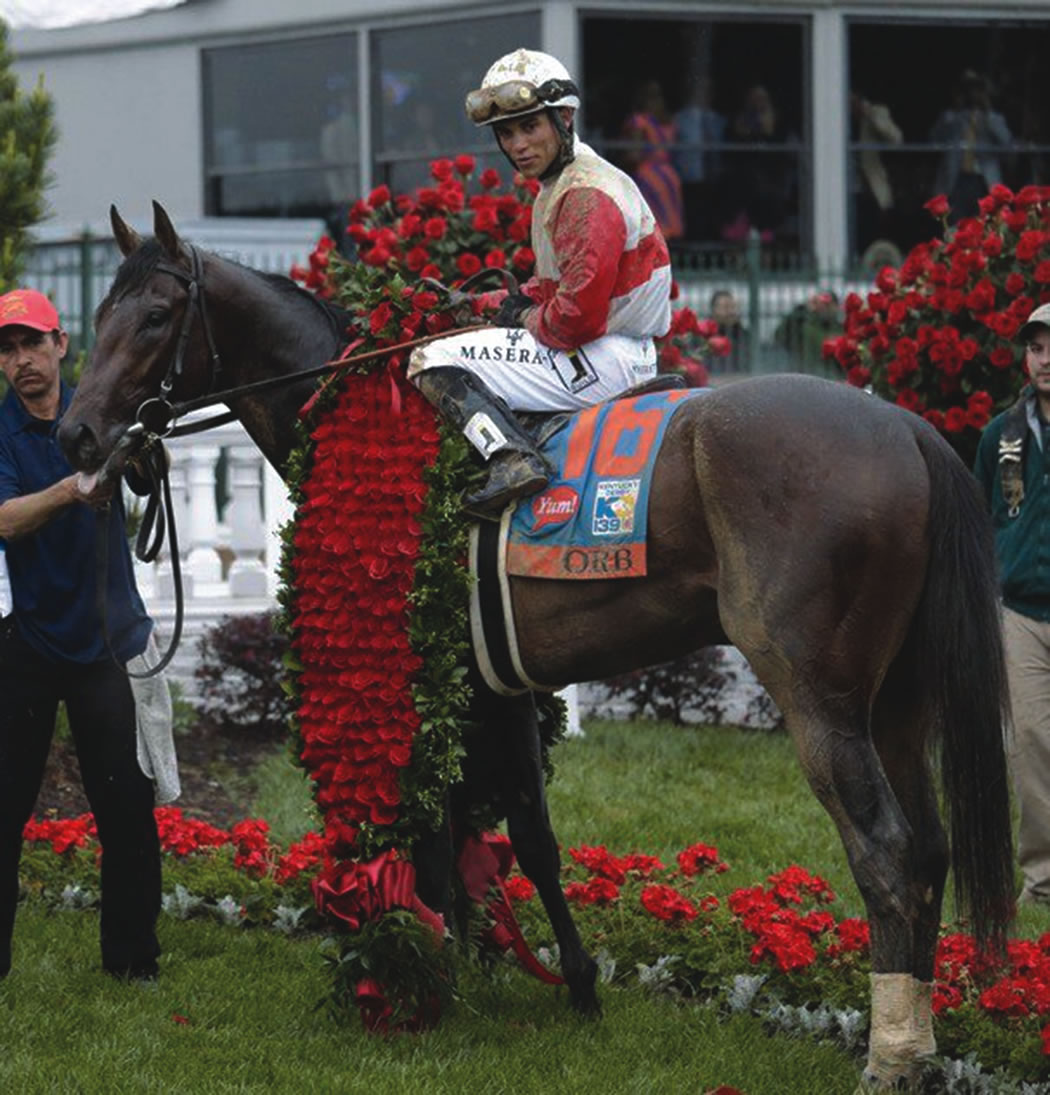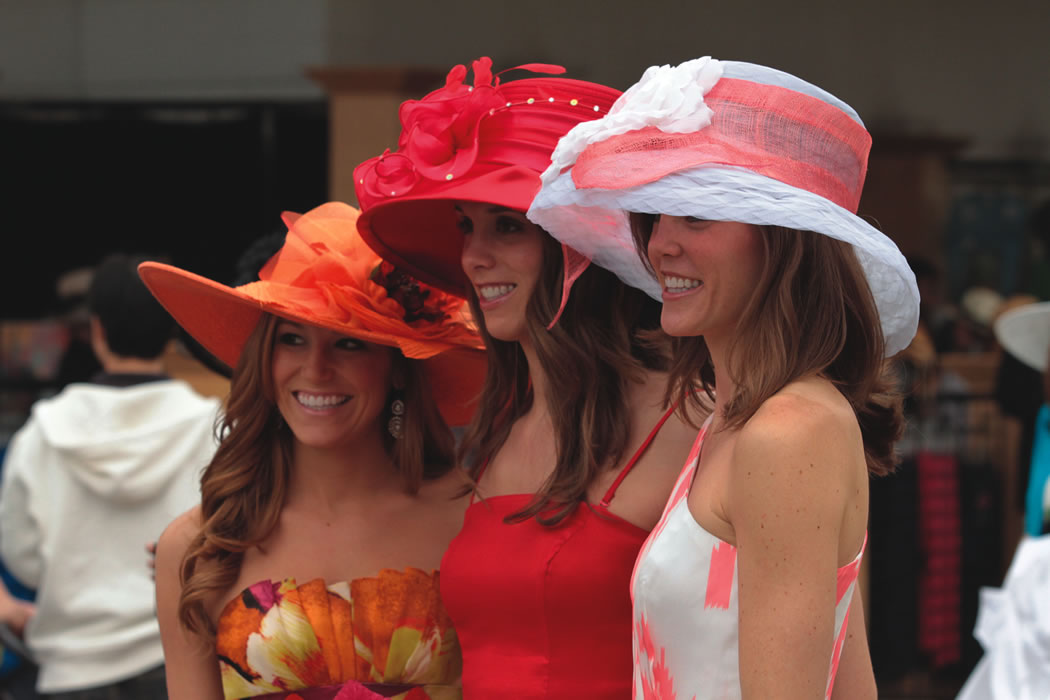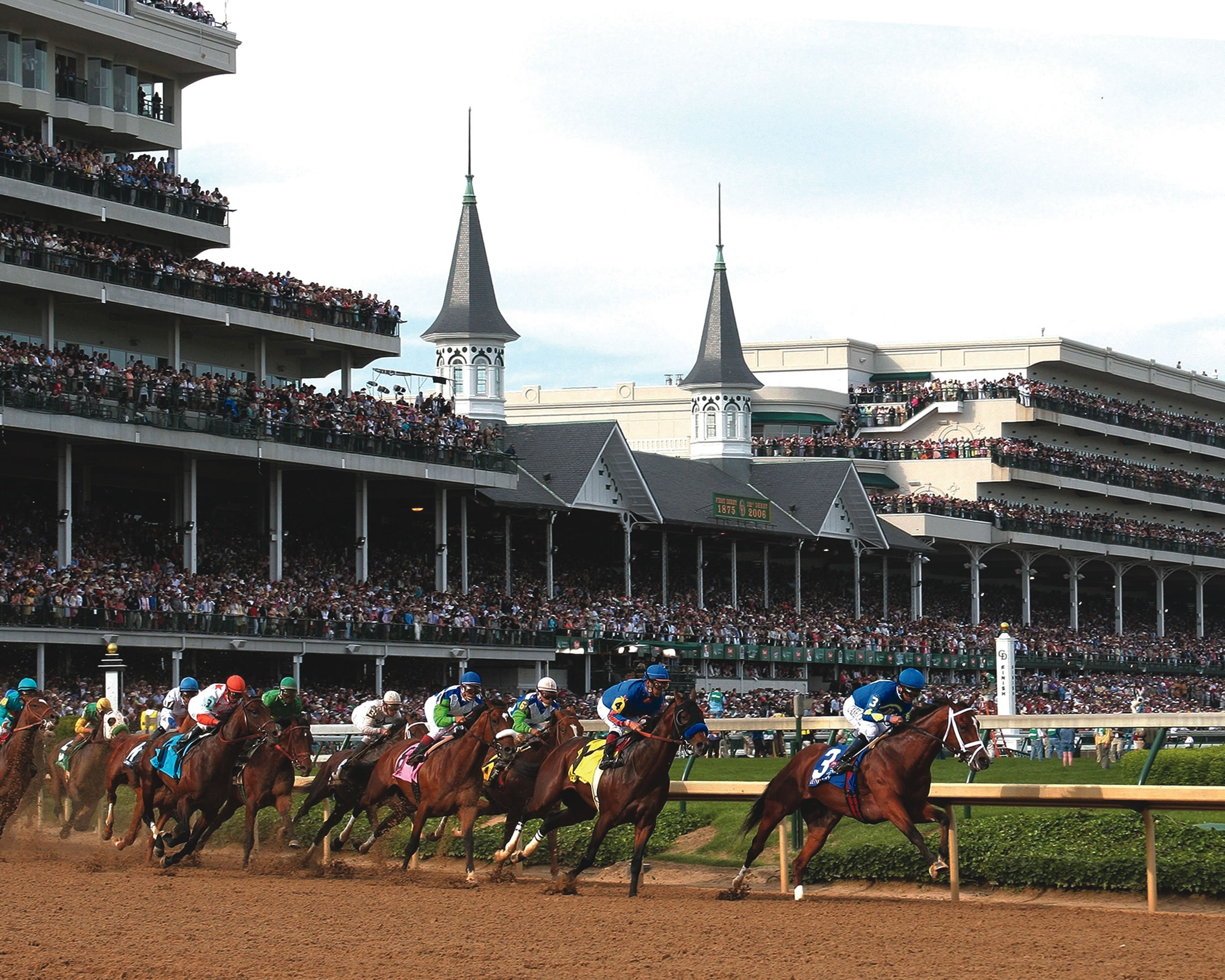Take a look inside the greatest and most exciting two minutes in sports this spring at the Kentucky Derby.
By Vicki Hogue-Davies
In the competitive world of thoroughbred horse racing, there are races, and then there is the Kentucky Derby. Not only a horse race, it is the oldest continuous sporting event in the country and includes a week of glamour, celebration and excitement that culminates with the placing of a wreath made of more than 400 red roses across the winning horse’s back.

Known as the “most exciting two minutes in sports,” the 1.25-mile Kentucky Derby takes place on the first Saturday in May every year, challenging a full field of 20 3-year-old thoroughbreds to claim their places in history. This year, the Kentucky Derby celebrates its 140th anniversary on May 3.
Winning the Kentucky Derby is a pinnacle of success for every trainer, jockey and owner who achieves it. Trainer Claude “Shug” McGaughey, who was inducted into the National Thoroughbred Racing Hall of Fame in 2004, reached that pinnacle last year when his horse, Orb, ran to victory. McGaughey, who won the Belmont Stakes, the final leg of the Triple Crown, in 1989, had made several Kentucky Derby attempts before his win with Orb. “There is nothing like winning the Derby,” he says. “ … My whole training life I’ve imagined what it would feel like to win it and what I imagined wasn’t even close.”
Historically, this most glamorous and iconic of horse races began as a way for Kentucky breeders to showcase their horses. Meriwether Lewis Clark Jr., grandson of explorer William Clark, who led the Lewis and Clark Expedition of 1803 to 1806 across the Louisiana Purchase to the Pacific Ocean, founded the race. Meriwether Lewis Clark was influenced by the British version of the Derby—the Epsom Derby—after his visit to England in the early 1870s, says Chris Goodlett, curator of collections for the Kentucky Derby Museum, which opened in 1985 at Churchill Downs, the racetrack of the Kentucky Derby. The track was built on land leased from Meriwether Lewis Clark’s uncles, John and Henry Churchill, and was originally known as the Louisville Jockey Club.
“The Epsom Derby featured 3-years-olds running a mile and a half on the grass,” Goodlett says. “Clark basically modeled [the Kentucky Derby] after that race but on dirt rather than grass. The first race (run in 1875 with a field of 15 horses and won by Aristides) was very popular, at least locally, from the get-go. Newspaper reports of the time say there were about 10,000 people who attended.”
The turning point from merely a horse race to an iconic annual event occurred in the early 1900s, when businessman and racing enthusiast Matt Winn, along with a group of investors, took over the running of Churchill Downs in 1902. He managed Churchill Downs until his death in 1949.

Horses of this era also helped cement the race’s popularity. For example, Old Rosebud, who won the Derby in 1914, set a track record for the mile and a quarter at 2:03.
In 1896, the length of the Kentucky Derby changed to its current 1.25 miles. While the race has gotten slightly shorter than when it began, the crowds coming to watch it have grown much larger. The Derby marked its largest crowd ever in 2012 when more than 165,000 people crowded into the track’s infield, its grandstands and its exclusive Millionaires Row.
Top Horses and Moments
There are many great horses in the Kentucky Derby’s nearly 140-year history. Names like Secretariat, Affirmed and War Admiral, among others, are perhaps part of America’s collective horse racing consciousness. Secretariat, considered one of the greatest racehorses of all time, set the still-standing record for the Kentucky Derby, running it in 01:59.40 in 1973. “Big Red,” as Secretariat was nicknamed, went on to win the Triple Crown, setting records in the Preakness and Belmont Stakes, and winning the Belmont by an astonishing 31 lengths. Affirmed, who won the Derby in 1978, went on to win the Triple Crown—he is the last horse to date to do so. He was also the great-great-grandson of the 1937 Kentucky Derby and Triple Crown winner, War Admiral.
When it comes to the most important racing moments, however, most people will point to Secretariat, Goodlett says. Additionally, he says there are two races that are especially memorable: One of them was Bill Shoemaker’s win at age 54 aboard Ferdinand in 1986. The other memorable win was Winning Colors in 1988.
“She was the last filly to win the Derby,” Goodlett continues. “It was the first time that D. Wayne Lukas, still a very popular trainer, won it. A lot of times trainers don’t run fillies in races against the boys, particularly in the Derby, because typically the colts are bigger than the fillies. That was not the case with her. She was one of the biggest, if not the biggest, horse in that race. She started on the lead and ended on it.”
Derby Traditions

Almost as famous as the horses and the race itself are the long-standing traditions and fanfare surrounding the Derby. The traditional playing of “My Old Kentucky Home” during the post parade by the University of Louisville marching band, with 150,000 people singing along, is an especially touching moment, Goodlett says.
Another tradition is the drinking of mint juleps. Each year, more than 100,000 of the bourbon-based drinks are sold at Churchill Downs on Derby weekend, which begins on Friday with the Kentucky Oaks—a race just for fillies—and culminates with the Derby on Saturday. Then, there is the garland of red roses the winning horse receives that inspired the term “Run for the Roses.” The red rose became the official flower of the race in 1904.
While the winning horse is blanketed in roses, the winning owner receives a solid gold trophy currently worth an estimated $95,000. The urn-style trophy features a horse and rider with a horseshoe on the front. For milestone anniversaries, such as the 75th, 100th and 125th, special jewels were added—the same is expected for the 150th.
And as anyone who has ever watched the race on television has observed, statement-making hats, ranging from very fancy to fanciful, are an important part of the Derby experience. “It wasn’t until the 1960s that you started seeing people with the crazy hats,” Goodlett says.
The 140th Run for the Roses is also expected to follow in the grand traditions of its predecessors with both the social element and competitive spirit. There are currently many contenders being discussed in horse racing circles. Last year, a new point system, officially branded as the Road to the Kentucky Derby, was implemented to determine the 20 horses that will be in the gate on race day. Under the system, Churchill Downs officials select the races that count toward points based on different variables. One horse currently in contention is the colt Honor Code, being trained by McGaughey.
“The Derby is still No. 1 to me, and I hope Honor Code will take us there,” McGaughey says. “We are excited about him.”
Whichever horse ends up winning the 2014 Kentucky Derby, it is sure to be another exciting time and a memorable moment in history. B








